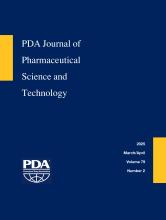Abstract
Adopting emerging microbiological methods is often desirable because it enables more advantageous, real time monitoring practices. However, when the newer method measures contamination based on a different detection principle and provides results that are based on different units of measure, a paradigm shift is necessary. That shift can be one of the most difficult challenges in any such project and requires careful consideration. In this paper, we explore the challenges presented by the Bio-Fluorescent Particle Counting (BFPC) technology, when considering that the traditional Colony Forming Unit (CFU) is the gold standard which any change is measured against. We examine why attempts to correlate newer units of measure used by Bio-Fluorescent Particle Counters, namely the Auto-Fluorescent Units (AFUs), to the traditional CFUs are not necessarily appropriate. The paper explores in depth why there is no consistent correlation factor between the two units of measure, and why that should not be a barrier to fully leveraging, implementing, and using such modern technologies in routine monitoring.
- Received August 3, 2022.
- Accepted July 3, 2023.
- Copyright © 2023, Parenteral Drug Association
PDA members receive access to all articles published in the current year and previous volume year. Institutional subscribers received access to all content. Log in below to receive access to this article if you are either of these.
If you are neither or you are a PDA member trying to access an article outside of your membership license, then you must purchase access to this article (below). If you do not have a username or password for JPST, you will be required to create an account prior to purchasing.
Full issue PDFs are for PDA members only.
Note to pda.org users
The PDA and PDA bookstore websites (www.pda.org and www.pda.org/bookstore) are separate websites from the PDA JPST website. When you first join PDA, your initial UserID and Password are sent to HighWirePress to create your PDA JPST account. Subsequent UserrID and Password changes required at the PDA websites will not pass on to PDA JPST and vice versa. If you forget your PDA JPST UserID and/or Password, you can request help to retrieve UserID and reset Password below.






